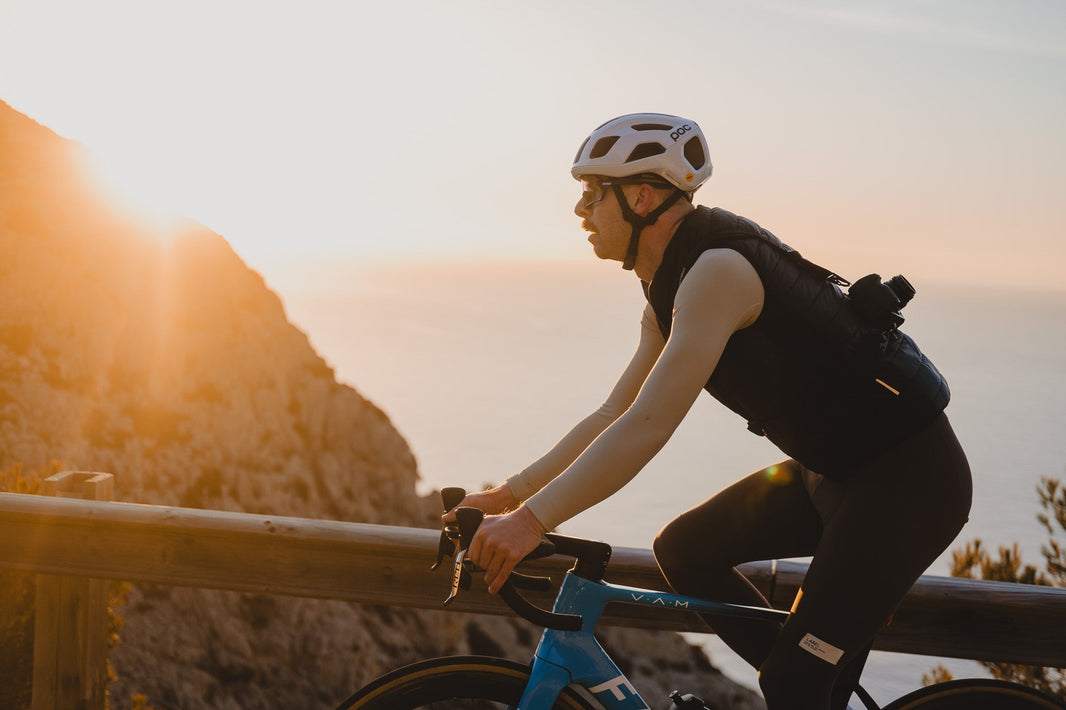Look, we’ve all been there. If you're preparing for your first big ride, starting from scratch, or training for a Gran Fondo, you don’t need luck you need structure and a bit of fun. A well-paced training plan will take you from casual rides to confident finishes, step by step. The key step here is fun. It’s why you’re doing this, right?
Why a Plan Matters
Cycling progress isn’t random. Without structure, it’s easy to overtrain, lose motivation, or stall. A training plan gives you clear direction, sets realistic targets, and helps you stay on course when energy dips or life gets busy. At the same time, the plan needs to be fun. If you’re struggling one day, just ride your bike no structure. Grab a coffee and cake at the local café or go out with your friends. Clear your head, then come back to it. We have to remember, we’re not pro cyclists.
Set a Goal You Can Build On
Most new cyclists average around 16 to 20 kilometres per hour. That means a 60 kilometre ride will take about three hours. It's a solid first milestone.
Start small. Choose a distance that feels challenging but achievable. A 60 km flat ride is very different from 30 km of hills. If your terrain includes climbs, scale the distance down and build up gradually.
If you're eyeing a Gran Fondo, it's a great benchmark. Long enough to test your limits. Structured enough to train toward.
How Often Should You Ride?
In the beginning, ride two to three times per week. Keep total weekly ride time between two to three hours. Focus on frequency and recovery rather than long sessions.
Rest is part of training. Take at least two full days off the bike per week. Overtraining early leads to burnout or injury. Pros can train almost every day, but beginners improve faster with more rest.
Understand Recovery
Easy rides need less than 24 hours to recover from. High-intensity efforts can require up to 48. If you're sore, tired, or unfocused, rest. Sleep is the most effective recovery tool you have.
Use active recovery rides to improve blood flow without stress. Keep them under an hour. These rides should feel effortless think cruising, not pushing.
Know Your Training Zones
Easy (Zone 1)
This is your foundation pace. You should be able to hold a conversation comfortably. Keep your effort steady especially on hills. Focus on smooth pedalling, upright posture, and staying relaxed.
Moderate (Zone 2)
This is your target event pace. You’re working harder, but still steady. Breathing is heavier, but controlled. Once you’ve built a base, use this pace to simulate longer rides and practice fuelling.
Hard (Zone 3)
Short intervals or hills live here. Push for 2 to 5 minutes, then recover. These sessions are about building strength, not speed. Keep your form smooth and increase the number of intervals gradually. Always warm up for at least 15 minutes beforehand.
8-Week Training Plan for a 60-Kilometre Ride
Always schedule full rest days between rides. The goal is steady progress, not exhaustion.
- Week 1: 3 easy rides, 1 to 1.5 hours each
- Week 2: 2 easy rides (1–1.5 hrs), 1 longer ride (2 hrs)
- Week 3: 1 moderate ride (1 hr), 2 easy rides (1.5–2 hrs)
- Week 4–5: 1 moderate ride (1.5 hrs), 2 easy rides (up to 2 hrs)
- Week 6: 1 interval session (1 hr), 2 easy rides (1.5 and 2.5–3 hrs)
- Week 7: 1 interval session (1.5 hrs), 2 easy rides (1.5 and 3–3.5 hrs)
- Week 8: 1 interval ride (1 hr), 2 easy rides (1 and 2 hrs)
For longer rides like 120 kilometres, stretch the plan to 12 weeks. Build gradually, layering intensity and volume week by week.
Technique and Positioning
Power and endurance help, but bad technique limits both. Keep your upper body relaxed, your back neutral, and your gaze forward. Pedal smoothly. Most form issues stem from a poorly fitted saddle make sure yours matches your sit bone width and riding position.
Boosting Power and Endurance
Add structured intervals and hill repeats once your base is stable. Push hard for short segments, then rest. Strength training off the bike, especially core work, helps stabilise your riding position and translate effort more efficiently.
Long, steady rides improve endurance faster than anything else. Stay in an easy zone. Add time each week. Fuel well and pace yourself.
Nutrition and Hydration
Carbs fuel your rides. Protein repairs you after. Stay consistent both on and off the bike.
Before your ride, eat something simple like oatmeal or toast with banana. On rides under an hour, water is usually enough. For longer rides, aim for 30 to 60 grams of carbs per hour through drinks, gels, or bars.
Don’t just hydrate refuel. Use drinks with electrolytes, especially sodium. Aim for around 475 millilitres of fluid per hour, more if it’s hot. Choose a drink that includes both carbohydrates and electrolytes for better absorption and energy.
Do You Need Tech?
You don’t need fancy gear to improve. But if you like tracking data, use tools like Strava or MapMyRide to log rides and track progress. Heart rate monitors help define training zones. GPS computers make route navigation easier. Power meters give precision feedback but are entirely optional.
Pen and paper still work. The important thing is consistency.
Get Ready for the Big Ride
Two weeks out, finalise your plan. Know what you’ll eat and drink. Stick to the nutrition you trained with don’t experiment on event day.
Get your bike checked. Tighten bolts. Inspect tyres. Pack tools and spares. Review your pacing strategy and start slower than you feel. Finish strong by holding back early.
Remember
Don’t overcomplicate it. Stay consistent. Build slowly. Recover well. The gains will come. Your only job is to keep showing up and have fun.






